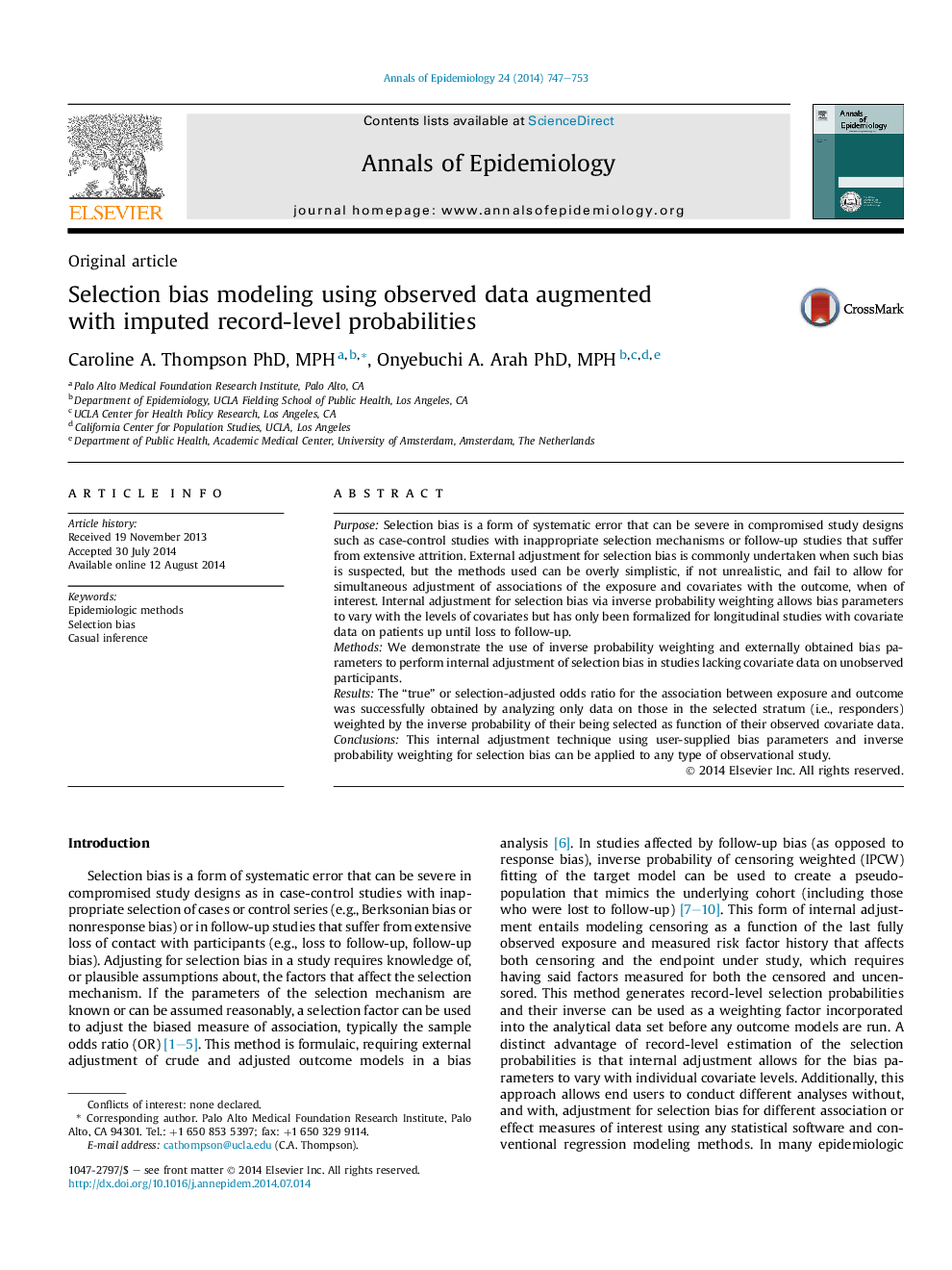| Article ID | Journal | Published Year | Pages | File Type |
|---|---|---|---|---|
| 3444190 | Annals of Epidemiology | 2014 | 7 Pages |
PurposeSelection bias is a form of systematic error that can be severe in compromised study designs such as case-control studies with inappropriate selection mechanisms or follow-up studies that suffer from extensive attrition. External adjustment for selection bias is commonly undertaken when such bias is suspected, but the methods used can be overly simplistic, if not unrealistic, and fail to allow for simultaneous adjustment of associations of the exposure and covariates with the outcome, when of interest. Internal adjustment for selection bias via inverse probability weighting allows bias parameters to vary with the levels of covariates but has only been formalized for longitudinal studies with covariate data on patients up until loss to follow-up.MethodsWe demonstrate the use of inverse probability weighting and externally obtained bias parameters to perform internal adjustment of selection bias in studies lacking covariate data on unobserved participants.ResultsThe “true” or selection-adjusted odds ratio for the association between exposure and outcome was successfully obtained by analyzing only data on those in the selected stratum (i.e., responders) weighted by the inverse probability of their being selected as function of their observed covariate data.ConclusionsThis internal adjustment technique using user-supplied bias parameters and inverse probability weighting for selection bias can be applied to any type of observational study.
